WISTERIA
Wisteria
Nutt, Gen. Amer. 2: 115. 1818; Hutchinson, Gen. Fl. Pl. 1: 378. 1964; Wie & Pedley, Fl. China @ eFloras.org 10: 188; Fl. Pak. @ eFloras.org p. 54.
Lianas, deciduous. Winter buds ovoid; scales 3-5. Leaves imparipinnate; leaflets opposite, margin entire, often stipellate; stipules small. Inflorescence a terminal, elongated, pendulous raceme, nodes scattered on rachis, with one flower, flowers bisexual, zygomorphic, 5-merous, perigynous, blue, purple, mauve or white. Bracts caducous; bracteoles absent. Sepals 5, fused; lobes 5, unequal, upper 2 teeth short and subconnate, lower 3 generally longer. Corolla papilionaceous, vexillum orbicular with 2 appendages above the claw. Wings free from keel. Keel incurved, obtuse. Stamens monoadelphous or diadelphous, vexillary stamen free or connate with others in the middle; anthers uniform. Monocarpellary, ovary stipitate, pubescent, many ovuled (5-16), placentation marginal; style glabrous; stigma terminal, small. Fruit linear to oblanceolate, leathery, torulose, continuous inside. Seeds 1-3 or more, reniform, estrophiolate.
4 species
Wisteria sinensis
Wisteria sinensis
(Sims) DC., Prodr. 2: 390. 1825; Fl. Pak. @ eFloras.org p. 54; Parker, For. Fl. Punj. ed. 1. 170. 1918 (Reprint 1973); ed. 3. 171. 1956; Wisteria sinensis (Sims) Sweet, Hort. Brit. 121. 1826; Fl. China @ eFloras.org 10: 188.
A large deciduous woody climber; in winter the plant is a tangled mass of naked woody stems. Winter buds ovoid; scales 3-5. Branches white villous when young, soon glabrescent. Leaves opposite, imparipinnate with 7-11(-13) leaflets, rachis 15-30 cm long including petiole; petiole 3-5 cm long, hairy, base pulvinate; petiole and rachis pubescent with adaxial groove; leaflets 4-8 cm x 2-4 cm, with basal pair smallest and leaflets becoming gradually larger apically (the terminal largest), thin, membranous, elliptic-ovate to lanceolate-ovate, entire, base rounded to cuneate and somewhat asymmetric, apex attenuate to caudate, both surfaces appressed-pubescent when young; petiolules ca. 2.5 mm long, densely pubescent; leaflets stipellate, terminal with 2 and lower ones with one stipel (two per node), 0.5 mm long, linear, subulate, hairy. Racemes terminal or axillary from branches of previous years, pendulous, 15-30 cm x 8-10 cm, white villous. Pedicels 1.7-2.0 cm, slender, pubescent. Flowers bisexual, zygomorphic, 5-merous, perigynous, 2-2.5 cm long, fragrant, mauve coloured, bracteate; bracts 7-8 mm x 1 mm, densely pubescent, caducous. Calyx 8 mm long, light purple or mauve coloured, pubescent; tube 4 mm long; lobes 5, unequal, the lowest the longest, sometimes 2 lobes connate. Corolla papilionaceous, mauve or occasionally white, ca. 2 cm long; vexillum 1.8 cm x 1.5 cm, orbicular, apex truncate, sometimes emarginate with mucro, glabrous, with two small pockets above the claw; wings 1.8 cm x 0.5 cm, clawed, free from keel; keel ca. 1.3 cm x 0.5 cm, slightly incurved, obtuse. Stamens 10, diadelphous (9+1), vexillary stamen free; staminal sheath ca. 8 mm long; anthers uniform, oblong. Ovary ca. 1.1 cm long, shortly stipitate, hairy, with a lobed disc at the base of stipe, unilocular, 6-8- ovuled, placentation marginal; style ca. 4 mm long, incurved, glabrous; stigma terminal, small, hairy.
Flowering: March to May
Common Names: Chinese Wisteria, Sweet Wisteria
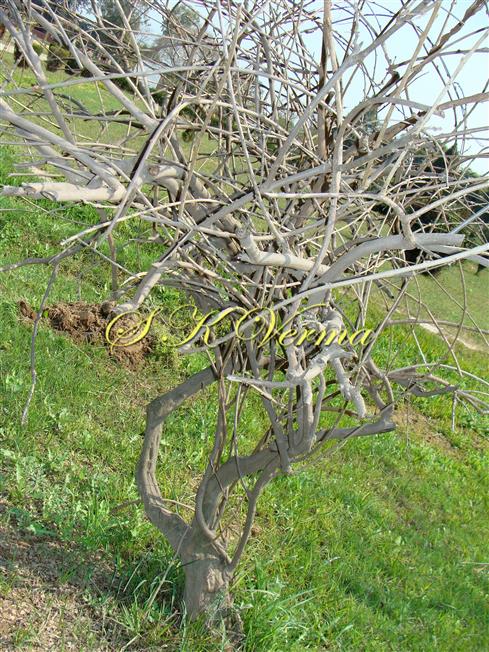
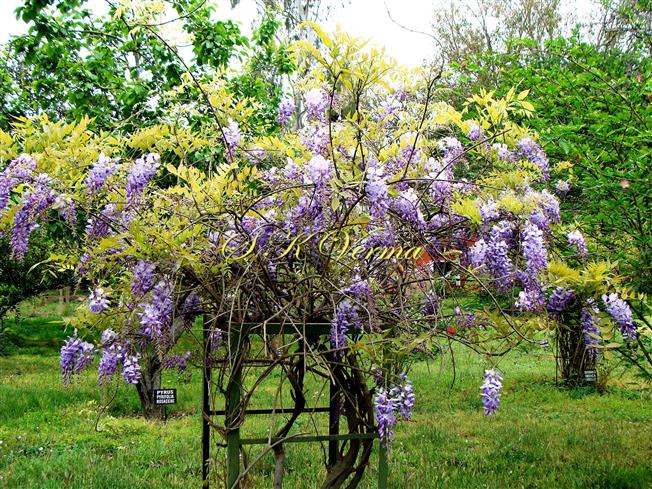
-4539.jpg)
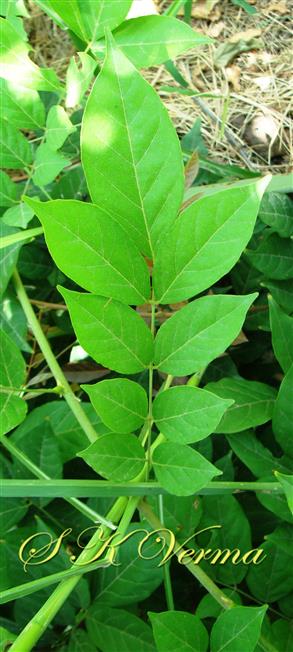
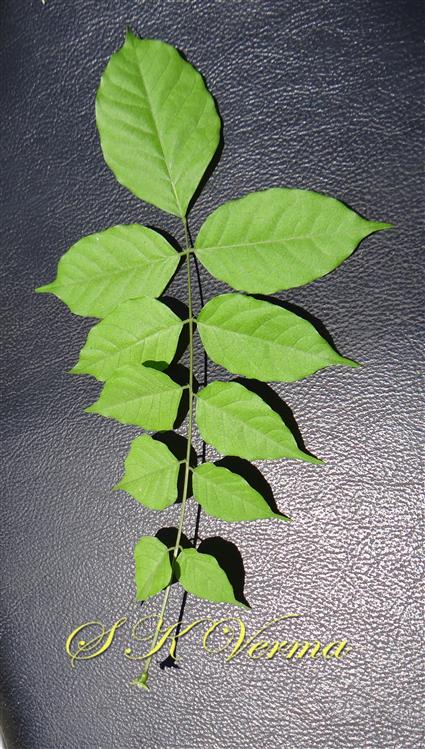
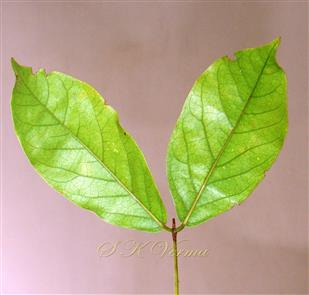

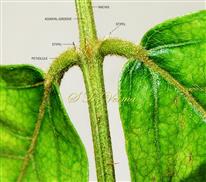
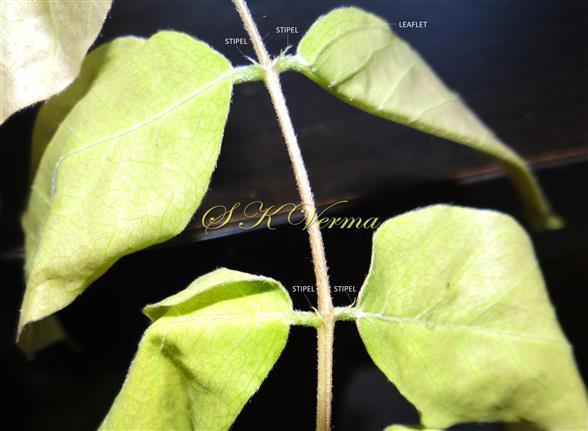
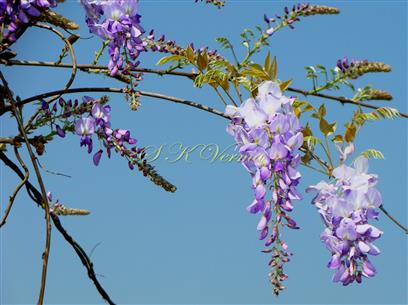
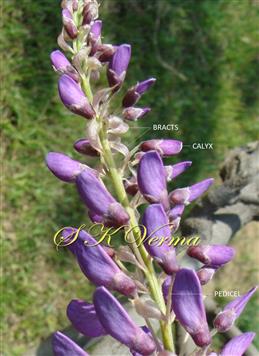
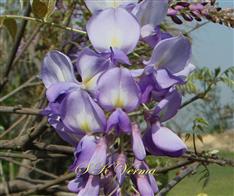
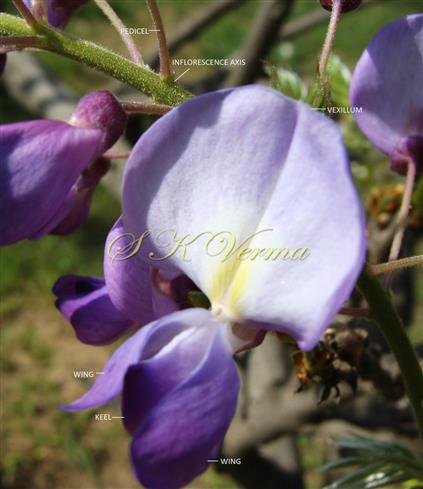
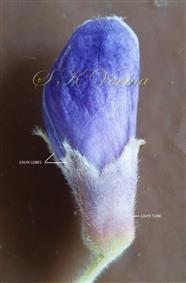
-DSC06062A.jpg)
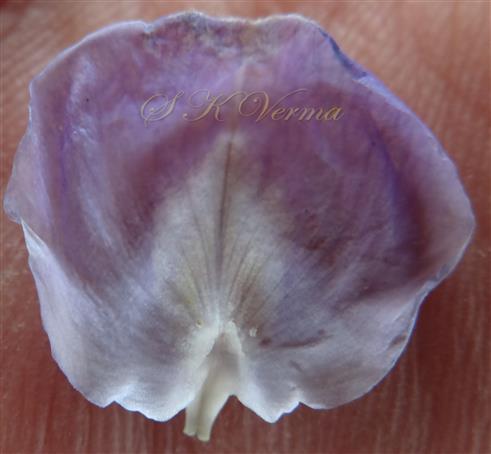
 with pockets-DSC06000.jpg)
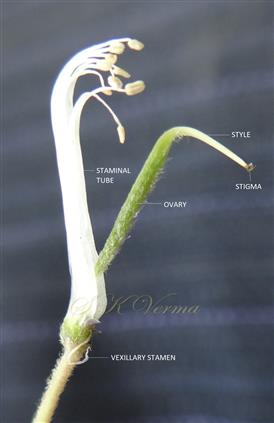
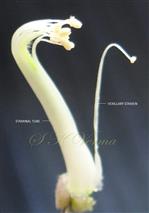
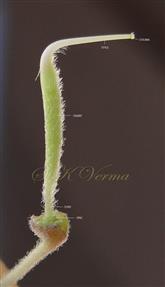



-4539.jpg)











-DSC06062A.jpg)

 with pockets-DSC06000.jpg)


